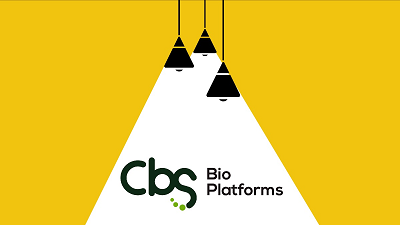
Preliminary samples show significant contaminants requiring mitigation. Incidence and levels expected to increase as testing continues.
Preliminary data collected from post-harvest grain samples has confirmed a substantial risk of mycotoxins threatening feed quality in key growing areas of Canada and the U.S. – such as southern Ontario and pockets of the midwest.
“Based on these early results, which confirm our earlier prognostications, we are reinforcing our advice to livestock farmers and feed suppliers to take steps to protect feed from contaminants,” says Dr. Tony Wang, mycotoxins expert with CBS Bio Platforms. “We expect incidence and levels to increase further as we test more samples.”
Mycotoxins impact animal health and performance, he notes. The damage they cause reduces farm profits. “It makes sense to treat your feed to prevent those losses.”
Insights on the historical context risk
As previously noted by CBS experts, harvest in some areas was delayed this fall due to late summer and early fall rains. As a result sampling and testing for mycotoxin levels was also behind. But with strong data now available, all indications point to taking action, says Wang.
“What we’re seeing in the 2023 post-harvest samples is reminiscent of what we found in other high risk years such as the 2018/2019 harvesting year, when we saw significant increases in the incidence of contamination and also in the toxin concentrations in tested samples.”
For historical context using corn results as a case study, Wang has written an article on “Mycotoxins in Ontario corn: An old problem with new challenges.”
In the article he compares and contrasts data gathered by CBS Bio Platforms via its MycoCheck program, a service whereby farmers and feed suppliers in the CBS network submit samples to CBS laboratories for analysis. In return they receive a customized report outlining any potential mycotoxin exposure.
“In the MycoCheck program, we analyze eight main groups of mycotoxins,” he notes. This includes aflatoxins (AFs), ergot alkaloids (EA), fumonisins (FUMs), Type A (e.g. T-2/HT-2 toxins) and B (e.g. DON, 3/15 ADON) trichothecenes (TCTA and TCTB, respectively), Ochratoxin A (OTA), zearalenone (ZEA), and emerging mycotoxins.
“We can better prepare for the upcoming mycotoxin challenges by looking at some historical mycotoxin data in the corn from years with similar weather conditions, like 2018/2019,” he says.
In 2019, CBS analyzed 223 corn samples from various Ontario feed mills and farmers. Among those samples, 215 samples were contaminated with at least 1 group of mycotoxins. Most corn samples (81.2 % or 181 samples) were contaminated with 2 or more groups of mycotoxins. The most frequently detected mycotoxin group is TCTB (88.3% samples), and the highest concentration of DONs (DON+ADONs) was around 21.5 ppm. Other frequently occurring mycotoxins were FUMs and ZEA .
Chart showing 2018/19 results

For 2023, CBS has now analyzed 157 corn samples from the same region. Among results, 138 samples were contaminated with at least 1 group of mycotoxins. Among contaminated samples, 80 samples (51.3%) had 2 or more groups of mycotoxins. Similar to 2019, the most frequently detected mycotoxin group is TCTB (77.1% samples; Table 2). The highest concentration of DONs (DON+ADONs) is much lower than in 2019 (5.6 vs 21.5 ppm). Wang says it should be noted that the occurrence, maximum, average and median level of ZEA is higher than 2019 (43.3 vs. 32.7%; 2.41 vs. 1.68 ppm; 0.11 vs. 0.08 ppm and 0.05 vs. 0.04 ppm, respectively). The occurrence of FUMs is lower than in 2019.
“Overall, so far the mycotoxin occurrences and levels in 2023 corn samples are lower than in 2019,” says Wang. “However, because of late season rains delaying harvesting, as sampling continues we expect to see unwelcome increases in the occurrence of mycotoxin contamination and higher levels of toxins in corn.”
Chart showing “in progress” 2023 results

Although it is not yet seen in corn samples, Huang anticipates storage mycotoxins, like OTA, will be more frequently detected in further testing, due to the likelihood of later harvested grain being subjected to sub-optimal drying and storage conditions. “Significant levels of OTA can pose a particular threat if fed to young animals,” observes Wang. “Also, the co-occurrence of storage mycotoxins like OTA may amplify the toxic effects of field Fusarium mycotoxins.”
Options for safeguarding feed
Among mitigation options, CBS offers NutraMix™, a grain management technology that support safe, hiqh-quality feed as well as animal benefits — providing an effective insurance policy to feeding programs. NutraMix is available for use with feed supply for both monogastric and ruminant livestock. (Video: See how it works).
For added benefits, CBS also offers Maxi-Nutrio®, a CBS Yeast Bioactives technology that can improve animal health, immunity, and performance. “Combining grain management and Yeast Bioactives technology can provide a more comprehensive safeguard against potential mycotoxin challenges we may face in later 2023 and 2024,” says Wang.
CBS Bio Platforms is an innovation-focused company that researches, develops and manufactures a wide range of bio-based products used in feed, food and industrial applications. More information on CBS Feed Science Platforms (FSPs) is available at fsp.cbsbioplatforms.com and complete CBS Bio Platforms information is available at www.cbsbioplatforms.com.


















